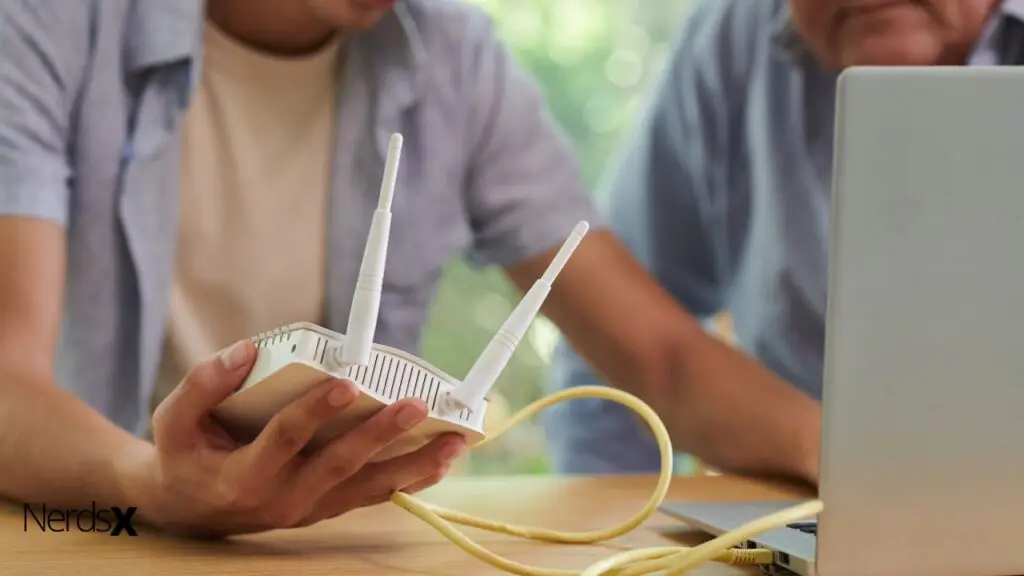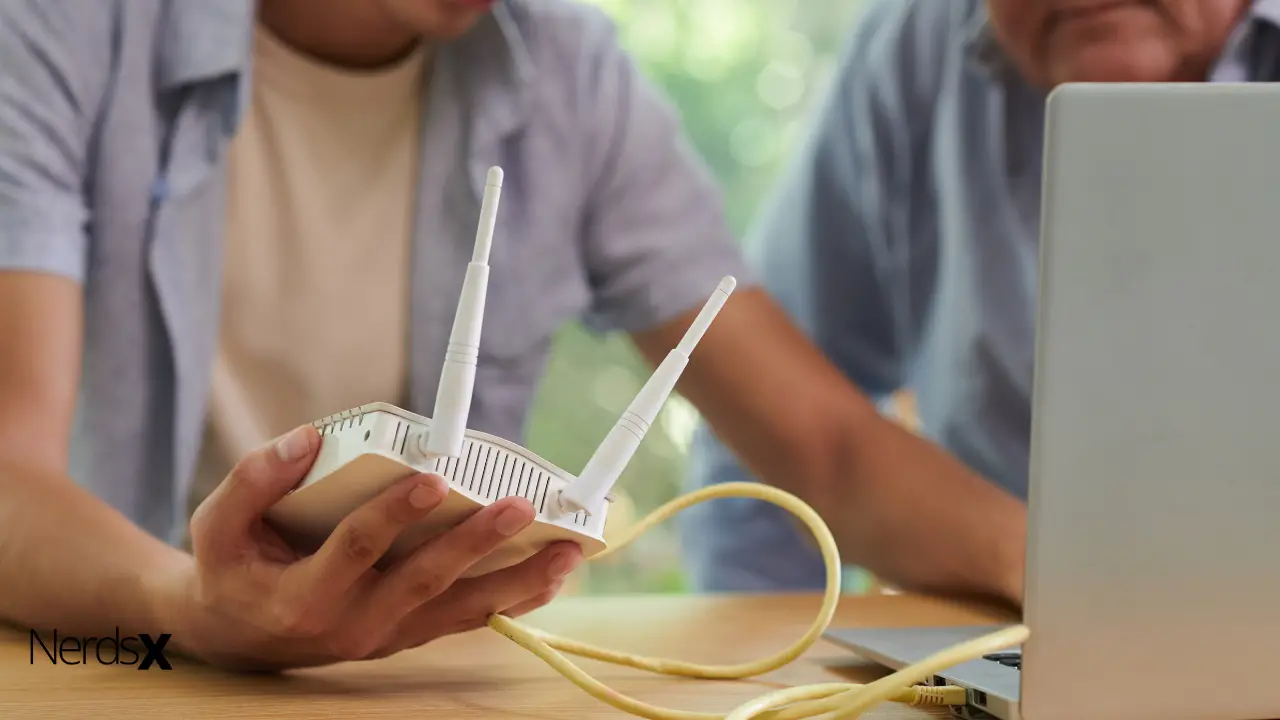Not having WIFI on a computer may be a significant hassle for folks who work on the go. This article is the best location to learn how to connect to the internet on a laptop without using Wi-Fi.
Fortunately, not having the WIFI module does not imply your job has to come to a halt. Even if you can’t obtain a WIFI connection directly from your laptop, there are still methods for getting online.
Other solutions are far less expensive than others, and some may even be free, depending on your current tools. The primary concept is that you will finally have access to the internet.
How To Get Internet On Laptop Without WIFI�?
There might be a disruption of the Wi-Fi internet connection on your laptop for various reasons.
�?An antenna is attached to the inside of the laptop lid by the WIFI module. The motherboard has a connection to the chip. Any of these components can fail, resulting in a problem. Because laptops are portable, connecting to Wi-Fi might be a problem. You do, however, have various methods for getting around this.
1. Using A USB Dongle
Dongles, which are roughly the same size as a USB storage stick, plug straight into the USB port on the upper side of your laptop to provide internet access while you’re on the go.
Because the devices are portable and straightforward to use, they are a perfect alternative if your laptop doesn’t have a wireless connection or if you need to access the internet fast while you’re not near a network.
Many motherboards do not have WIFI hardware pre-installed; they are ubiquitous on desktop PCs.
However, the ones on desktops may be considerably bigger and an eyesore on laptops. Instead, inexpensive USB dongles that provide the same function are available.
These are inexpensive, and installing drivers is as simple as connecting them to a computer and plugging them in for other uses.
Pros
1. Because these devices are often tiny, you may just put one into a USB port and leave it inside rather than removing it when finished, which reduces the danger of losing it.
2. They offer decent speeds and perform nearly as well as the laptop’s built-in WIFI card. They also have a decent range and don’t require any maintenance.
3. Allows you to access the internet from anywhere: on vacation, in a café, train, or in a park.
4. If your dongle plan enables it, you can use it overseas.
5. It’s simple to use: connect it to a USB port on your computer.
6. Short-term contracts and pay-as-you-go options are available, making it ideal for temporary connectivity.
7. There is no need to charge because it gets power from your computer.
8. It’s great for working on the move, and it’s handy to have on hand in case your internet goes down.
9. This device can provide you with an internet connection in locations where fixed-line broadband is sluggish or unstable.
Cons
1. A USB port on your device is required; thus, a dongle is only usable with a laptop, not a tablet, ebook reader, or mobile phone.
2. At any one moment, they can only connect to one device. You’ll need MiFi instead if you wish to connect additional devices.
3. It’s more costly than fixed-line broadband, and it’s usually a lot slower as well.
4. Limits on downloads might be a hindrance.
5. The range of receiving a good 4G signal is limited.
2. Using An Ethernet Cable
Ethernet cables are networks used to link devices on a local area network (LAN). It carries broadband signals between your computer, router, and modem, as well as any other wired, internet-connected devices in your home (gaming consoles and laptops, for example). Ethernet cables look like phone cables (but are more extensive and contain more wires) and plug into Ethernet ports, larger than phone ports.
Ethernet cables, being a globally recognized piece of internet technology, are supported by all computer manufacturers and may be used with practically any piece of hardware, except a tiny number of ultra-modern laptops. If you wish to connect these gadgets to an Ethernet wire, you’ll need to purchase an Ethernet adapter that will work seamlessly with your laptop.
Ethernet cables are available in three different types:
1. CAT5 (Category 5): CAT5 is the fifth generation of Ethernet network cable, capable of 100Mbps speeds. It is widely regarded as an ancient form of technology, as it is rather old and sluggish. On the other hand, individual customers will seldom require the speed given by CAT6. Therefore it’s a common choice for most home users.
2. Category 6 (CAT6) is the sixth version of Ethernet network cable, capable of carrying a gigabit of data (1000Mbps).
3. CAT7 is the seventh generation of Ethernet network cable, and it is more robust and has a longer lifespan than CAT5 and CAT6.�?
What Is The Best Method To Connect An Ethernet Cable?
It’s simple to connect an Ethernet cable. Here is how to go about the task successfully:
1. Connect the laptop/pc to the internet via an Ethernet connection.
2. Connect the other end of the Ethernet wire to one of the Ethernet ports on your hub.
3. It would help if you now had an Ethernet connection and your computer is ready to begin browsing the internet.
Pros
Ethernet wires are inexpensive. If you have ethernet connections available at work or home, connecting to the internet might be a terrific method if the laptop lacks WIFI.
Cons
The use of ethernet restricts the locations from which users can work. WIFI provides a wireless connection when in range, but you must have access to an Ethernet connector to utilize your ethernet connection.

3. Make Use Of A Dial-Up Connection.
Dial-up Internet access is a type of Internet access that uses the public switched telephone network’s (PSTN) infrastructure to create a connection to an Internet service provider (ISP) by calling a phone number on a regular phone line.�?
Modems are used in dial-up connections to decode audio signals into data for transmission to a computer or router and encode signals from the two devices for transmission to another modem.
Several internet service providers (ISPs) offer dial-up internet access. Various internet service providers supply you with a set of national or local phone numbers that you may use to dial into a network that connects to the internet.
A computer and, more importantly, a modem is required to obtain dial-up internet service. There are various types of modems available, and the majority of them are affordable and efficient.�?
Installation of an internal modem can be in a free slot on your computer or an external modem connection to the computer through wires. The modem has a link to a phone line.
Software on the computer controls the modem, whether external or internal. The Network Connection utility in the Microsoft Windows operating system is the program that allows you to connect to the internet. How? You must configure the ISP profile in the Network Connection tool so that the modem understands what phone number to dial and to connect to the internet.
After you’ve located and joined an internet service provider, you’ll need to choose a password and username. Why? When your modem contacts your ISP’s phone number, there is a connection and an exchange of data between the modem and the distant server.�?
A remote server is a computer with associated software set up to manage users who wish to connect to a network from a distance. The username and password you set for the modem give you access to the internet’s dial-up gateway. The internet gateway is a network that provides access to another network.
Pros Of Dial-Up Connection
Dial-up is the way to go if you’re searching for a low-cost internet connection.
Cons Of The Dial-Up Connection
1. Dial-Up is the slowest mode of connection available. Because the bandwidth is restricted, the modem will take some time to send and receive data. It will be challenging to load web pages, listen to music, or watch movies on the internet. However, several types of software can help you speed up your dial-up internet connection.
2. You can’t use the phone and search the web while using dial-up internet. Why so? Keep in mind that while one end of the phone gets connected to the modem, the other end gets plugged into the phone outlet. Internet services allow you to use your phone and be online simultaneously.
Conclusion
People who are attempting to find out how to obtain internet on a laptop without WIFI have a lot of possibilities. The best aspect is, there are various ways to access wireless internet, depending on your needs.
Working on the move is a must for most laptop users; therefore, choices like a USB dongle or USB tethering are ideal since they allow you to access WIFI.
People who use their laptops as fixed workstations with ethernet ports, on the other hand, will profit more from an ethernet cable internet connection since it is steady and dependable.

